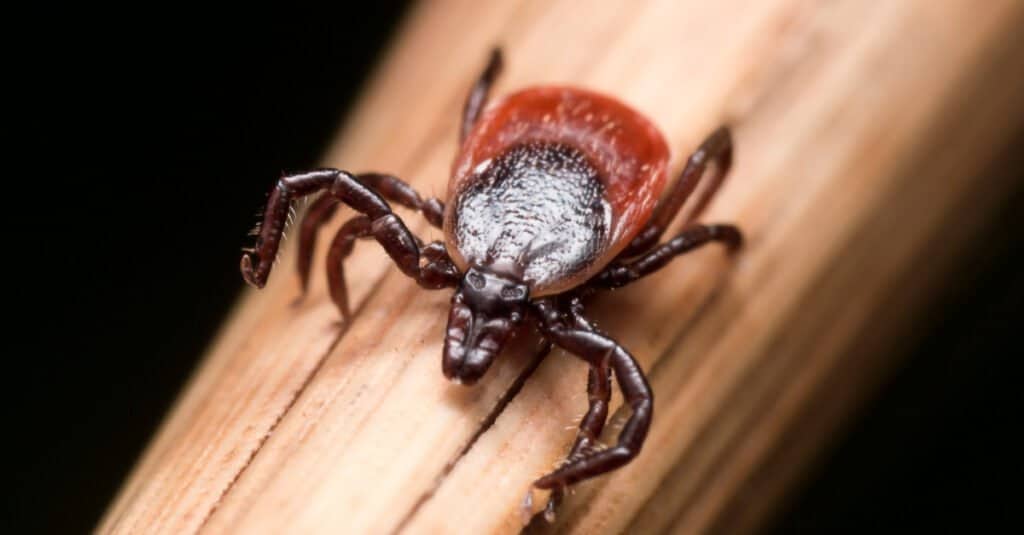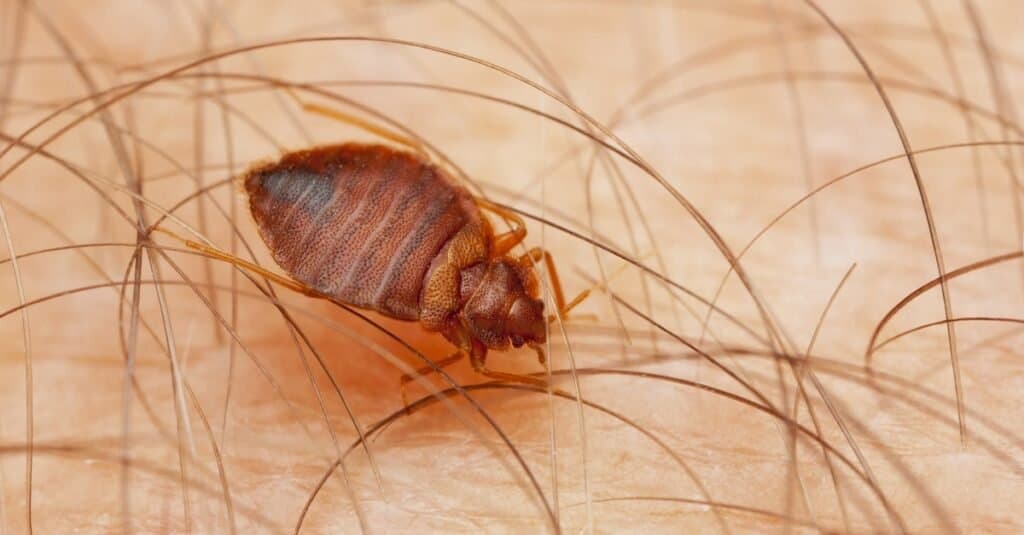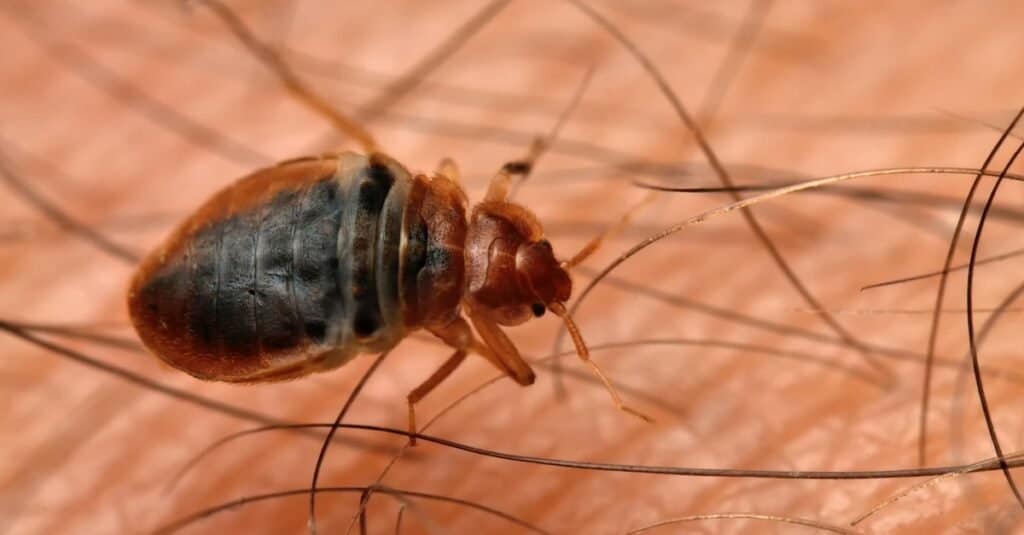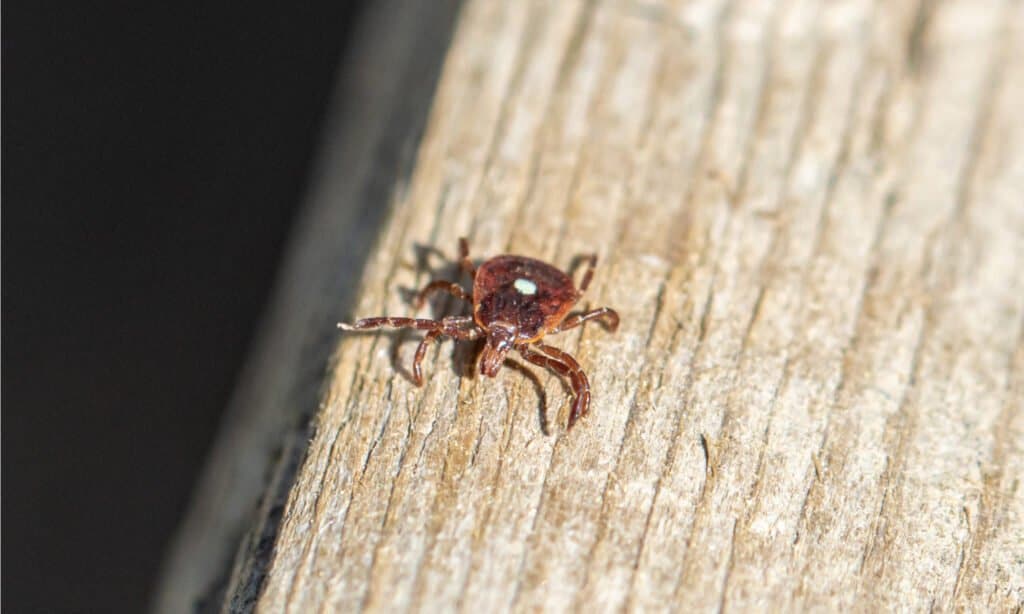It’s not surprising that we know very little about ticks and bed bugs at first glance. However, we can all agree that a common characteristic of ticks and bed bugs is their ability to gross us all out. After all, there is nothing that terrifies many of us more than the thought of one of these blood-sucking creatures being near us. Despite that, there seems to be little in common between the two. When it comes to tick vs. bed bugs, the two pests have a number of important differences. In this article, we will explore the differences between them as well as how you can tell them apart.
While there’s very little chance of ever seeing a fight break out between a tick and a bed bug, it’s important to know how to recognize, as well as avoid, these unwanted parasites.
Comparing Ticks vs. Bed Bugs

| Ticks | Bed Bugs | |
|---|---|---|
| Size | The size of a tick is typically between 3 and 5 mm. | It is common for bed bugs to be around 8 mm in size. |
| Appearance | The color of ticks ranges from dark brown to reddish brown, and they can be tan with stripes or white spots. Ticks have eight legs. | Bed bugs are reddish-brown to deep brown in color. In addition, bed bugs have six legs. |
| Host Preference | Animals | Humans |
| Habitat | They live primarily outdoors in heavily wooded and high grassy areas. | Bed bugs prefer beds, but they can also live in couches and furniture cushions. |
| Disease | Ticks can carry and transmit a wide variety of diseases. | Bed bugs do not carry or transmit diseases. |
Ticks vs. Bed Bugs: Comparing Key Differences

Ticks prefer to feed on animal hosts, whereas, bed bugs enjoy feeding on human hosts.
©Steven Ellingson/Shutterstock.com
Bed bugs and ticks have a number of differences, but here are three of the most important. Bed bugs have only six legs, whereas ticks have eight. It is more common for ticks to feed on animals than on humans, whereas bed bugs prefer humans as a food source. Finally, the majority of ticks live outdoors, whereas the majority of bed bugs reside indoors.
We’ll now discuss the main differences between ticks and bed bugs in greater detail.
Ticks vs. Bed Bugs: Appearance

Bed bugs are usually much larger than ticks and are a reddish-brown color.
©Pavel Krasensky/Shutterstock.com
It is surprisingly shocking how similar these parasitic creatures appear at first glance. While ticks and bedbugs have similar appearances, there are several key differences. Initially, bed bugs and ticks look roughly the same when they haven’t been fed. However, they actually are completely different sizes. It is common for a tick to grow no larger than a sesame seed, whereas a bed bug can grow as large as an apple seed. An average tick measures three to four millimeters in length, while an average bed bug measures eight millimeters.
After feeding, bed bugs change from a reddish brown to a deep red color. Across the country, all bed bug species have the same color. The color range of ticks is much wider than that of bed bugs. Like bed bugs, they are usually dark brown or reddish-brown, but they can also have white spots and tan stripes, or dark legs with light bodies.
Unlike bed bugs, ticks have no wings and are flat and oval-shaped. However, once they have eaten, both types of parasites become engorged, which increases their body mass. As a final note, ticks and bed bugs are two different species, each one having a different number of legs. As arachnids, ticks have eight legs, like spiders. The bed bug is an insect, and it has six legs.
Ticks vs. Bed Bugs: How They Feed Themselves

Bed bugs will pierce through skin and drink blood through a beak-like structure they have.
©D. Kucharski K. Kucharska/Shutterstock.com
The bed bug and tick are both parasites that feed on blood. The style of how they eat, how they eat it, and when they eat makes their feeding quite different. Ticks prefer animals as their primary food source, but they will feed on humans if no animals are available. Humans, however, are favored by bed bugs. They will only attack your pets when they have run out of humans to feed on.
A tick latches on to its victim for as long as it needs to get its meal. When ticks don’t get disturbed, they’ll stay on their host for a day or two. Bed bugs, however, work a little differently at getting their meals. A bed bug will sit on the surface of your skin and scratch a small area in order to expose it. A beak-like body part allows them to pierce through your skin and drink up your blood.
Ticks vs. Bed Bugs: Habitat
A bed bug’s preferred habitat is a bed, however, it can also reside in upholstery cushions and other furniture, such as chairs. It is safe to assume that bed bugs will always be indoors as they prefer to be close to their hosts so that they are not disturbed from having a meal.
As for ticks, they live outside in grassy and wooded areas. Ticks also do not infest buildings like bed bugs do. Instead, they wait for passing animals in the wild to hop on them in order to feast on their next meal.
Ticks vs. Bed Bugs: Diseases
Among the major differences between ticks and bed bugs is the degree of harm they are able to cause to humans. Certainly, no one wants any type of parasite to harm them, but ticks can present serious issues if left unattended. It is known that ticks are able to transmit diseases like Lyme disease, Rocky Mountain Spotted Fever, babesiosis, and Southern Tick-Associated Rash Illness to humans. There are no known diseases that are spread by bed bugs.
Ticks vs. Bed Bugs: Avoiding Them

Cover up when you go on hikes to avoid getting a tick on you.
©Maria T Hoffman/Shutterstock.com
The best way to prevent ticks and bed bugs from biting you is to take preventative measures. The best thing to do with ticks, especially, is to be on the safe side.
If you don’t want ticks to live in your yard, it is best not to keep any wood piles in your yard where they can hide. Maintain a regular mowing schedule in order to prevent the grass from becoming a hiding place for these pests. There are a few things you can do to ensure you are safe when hiking. If you plan to go into woods or grassy areas, wear protective clothing and avoid wandering off the path.
To prevent bed bugs from getting into your home, you should never take in mattresses or furniture off the street, and if you can, avoid purchasing furniture from consignment shops that are used. The first thing that you should do when you return from a trip is to inspect your suitcase and even vacuum it. The best way to ensure your mattress is protected for a long time is by purchasing an encasement for it.
The photo featured at the top of this post is © 7th Son Studio/Shutterstock.com
FAQs (Frequently Asked Questions)
Is a tick bigger than a bed bug?
The answer is yes and no. Most ticks are only a few millimeters long, while some bed bugs can grow to more than three-eighths of an inch. A few varieties of ticks, however, can grow larger than one inch, but they do not exist in the United States.
Does a bed have the potential to harbor ticks?
Ticks do not live inside beds or furniture in the way bed bugs do. They primarily live outdoors. However, if they have already attached themselves to you, then they could wind up in your bed after they have finished feeding. They may even hop onto your pets from that point.
What is the best way to kill bed bugs instantly?
When it comes to bed bugs, heat is the best defense because it kills them instantly. Heating a room to 130 degrees F will kill any bed bugs and their eggs in the room. The following household products will also kill bed bugs, though not immediately: Clorox, Lysol, hydrogen peroxide, and Diatomaceous Earth.
Thank you for reading! Have some feedback for us? Contact the AZ Animals editorial team.






